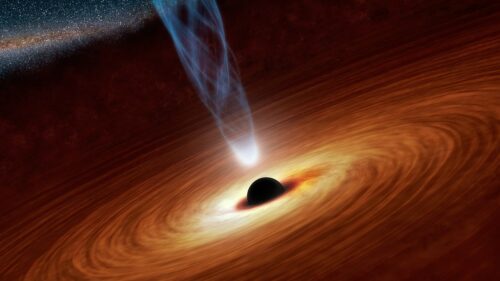Image courtesy of Pixabay.
With their mind-bending metaphysical properties, black holes appear to be objects taken straight out of a science fiction film. But underneath their seemingly fictional characteristics may be the future of energy. Since Einstein proposed his general theory of relativity, which predicted that black holes possess vast amounts of energy, many physicists have sought ways of extracting it. Such methods include those of Roger Penrose and Stephen Hawking, who proposed that energy could be drawn through particle disintegration and quantum mechanical emission, respectively.
Recently, physicists Luca Comisso from Columbia University and Felipe Asenjo from Universidad Adolfo Ibanez in Chile, have theorized a new way to extract energy from black holes through a magnetic reconnection process occurring in the plasma surrounding black holes.
Plasma is a highly ionized state of matter containing electromagnetic fields that exist around black holes’ high levels of electrical current. Asenjo explained that under these conditions, interactions between plasma can cause magnetic field lines to break and reconnect. “Field lines are attached with the plasma, like the beads in a necklace,” Comisso said. Generally, these magnetic field lines cannot directly interact with each other, but there are small regions with a very strong electric current density where this can occur. In these regions, rather than moving with the plasma, field lines tend to break and reconnect. This accelerates plasma in two directions: towards the black hole and away from it.
This process of magnetic reconnection mainly occurs in the ergosphere, the area near the event horizon of a black hole. There, spacetime is accelerated by the gravitational pull of the black hole, dragging plasma with it. “The plasma surrounding a black hole needs to travel at almost relativistic speeds in order to maintain its proper orbit,” Comisso said. He explained that inside the ergosphere, there is no way to move in the opposite direction of the rotation of a black hole. But when plasma is accelerated in two directions by the breaking and reconnecting of field lines, one is pushed in the opposite direction against the spin of the black hole. Instead of rotating against the spin, plasma gains negative energy and falls into the event horizon. The plasma accelerated in the direction of the spin gains positive energy and escapes the ergosphere.
Comisso and Asenjo theorized that these high energy escaping particles could be captured and used as a source of energy. But, the technology needed to make this a reality is in the distant future. “In order to extract energy from a black hole, you would have to build something around the black hole—far enough so that its gravity does not draw you into it,” Asenjo said.
According to Comisso, the laws of physics allow for the extraction of energy from black holes, but technology must advance much farther in order for this to become a reality. “The time scale of a million years is what seems most realistic at the time,” Comisso said.
In the meantime, until these theories can become reality, the wonders of black holes will be explored through science fiction.
Sources:
Columbia University. (2021, January 13). Could we harness energy from black holes? A new study indicates energy can be extracted from black holes through reconnection of magnetic field lines. ScienceDaily. Retrieved March 20, 2021 from www.sciencedaily.com/releases/2021/01/210113100829.htm
Comisso, L. & Asenjo, F. A. (2020). Magnetic reconnection as a mechanism for energy extraction from rotating black holes. Physical Review D, 103(2), 023014.10.1103/PhysRevD.103.023014

